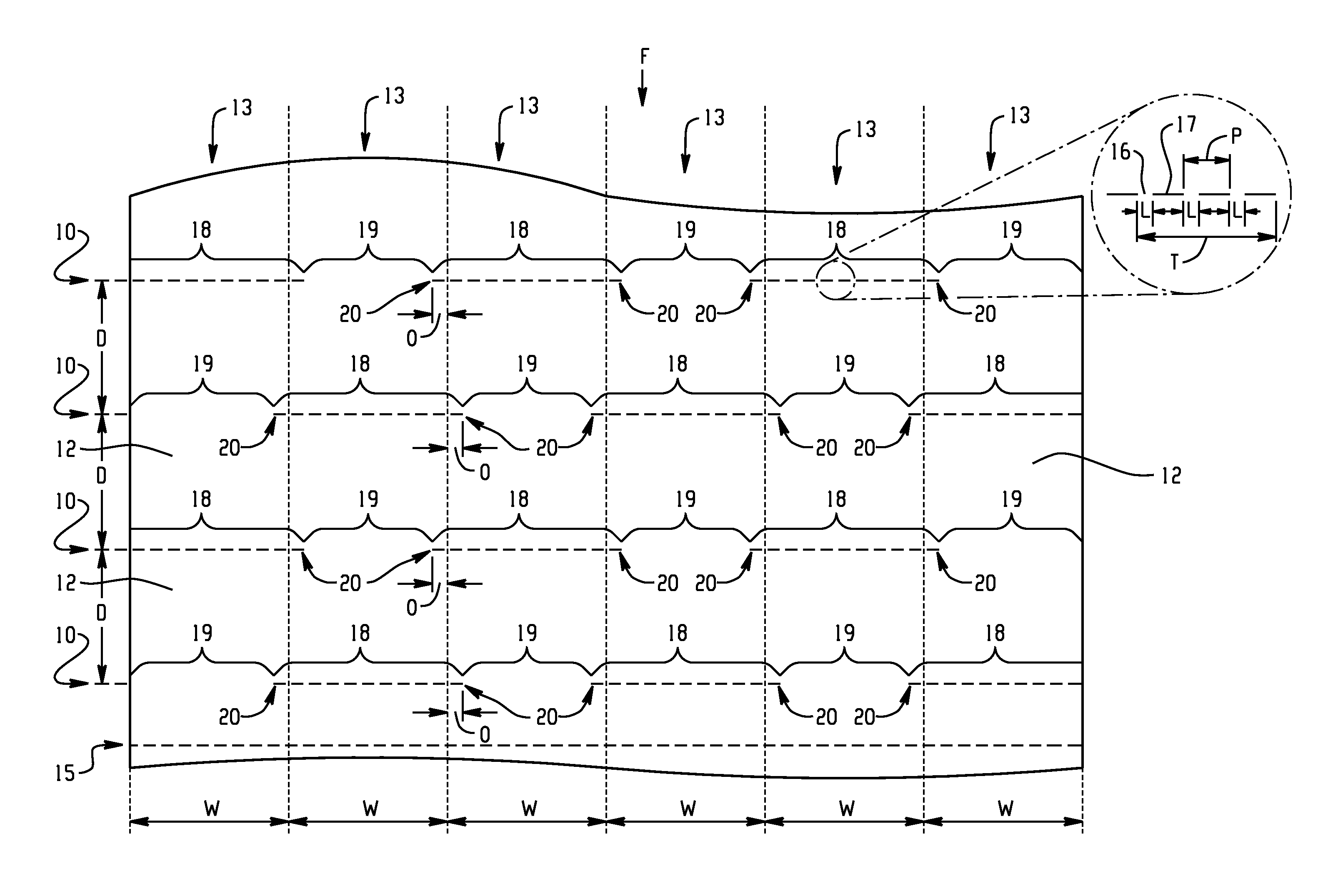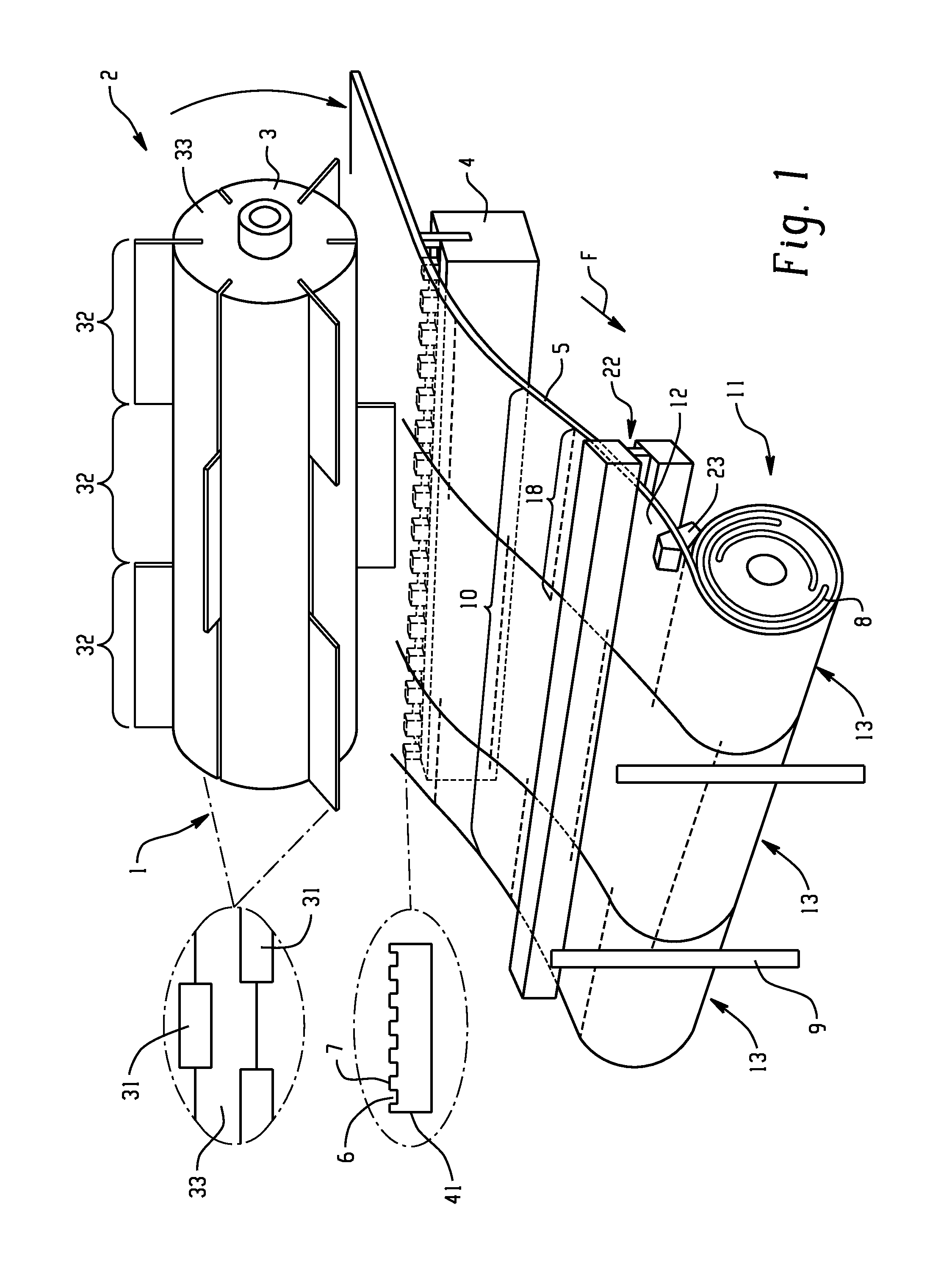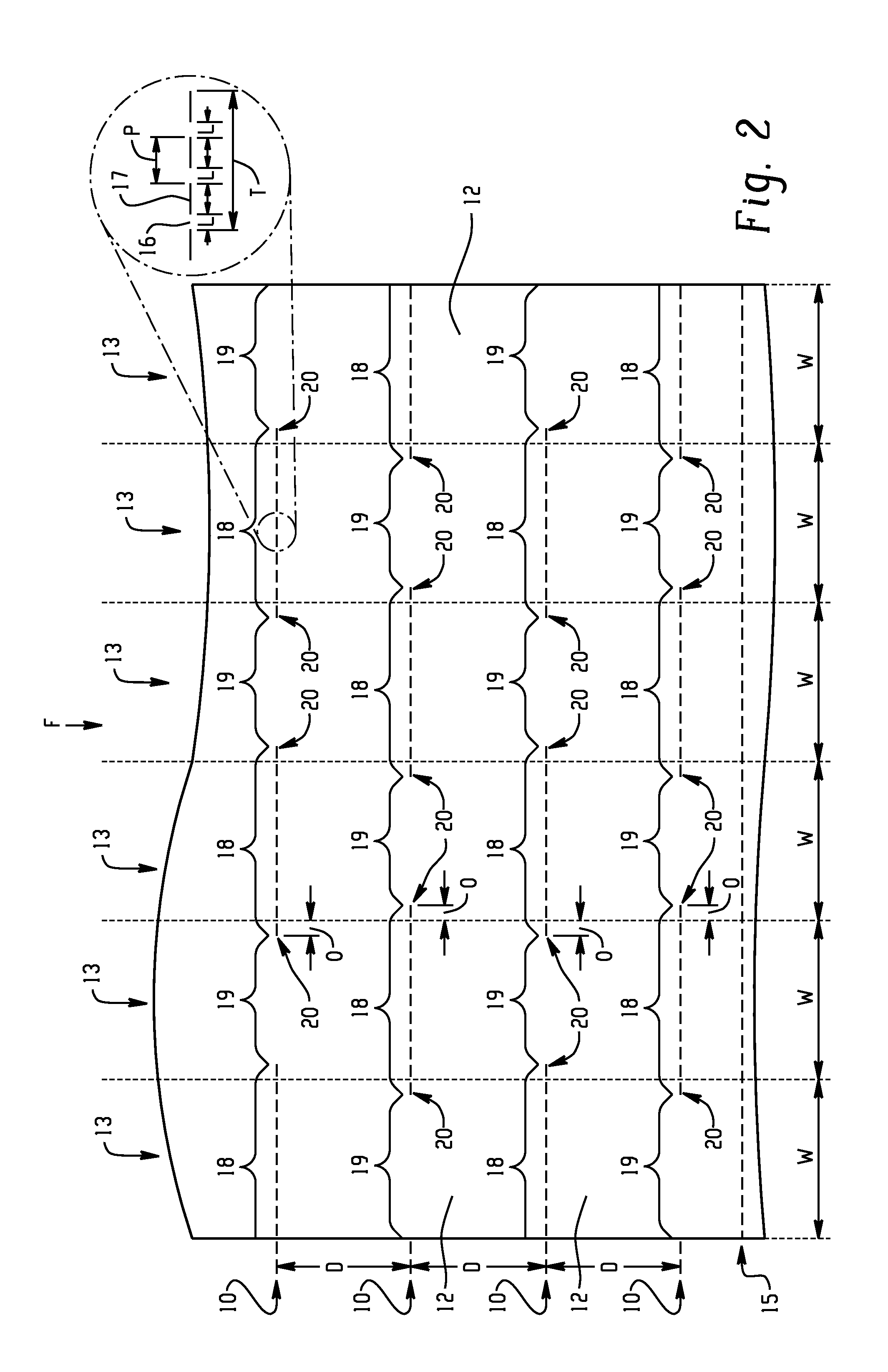Method for Manufacturing a Sheet Product for Use in a Dispenser and Strip of Sheet Product
a technology of sheet product and dispenser, which is applied in the direction of paper/cardboard containers, identification devices, instruments, etc., can solve the problems of inconvenient overall process of removing paper sheets from dispensers, risk of paper breaking, and inability to provide sheets to users, so as to reduce the perforation breaking strength of the strips of sheet products, reduce the risk of paper breaking, and reduce the effect of the manufacturing process
- Summary
- Abstract
- Description
- Claims
- Application Information
AI Technical Summary
Benefits of technology
Problems solved by technology
Method used
Image
Examples
Embodiment Construction
[0048]Reference in detail will now be made to non-limiting embodiments of the invention, examples of which are illustrated in the accompanying drawings. Wherever possible, the same reference number has been used throughout the drawings and the following detailed description to refer to the same or similar parts.
[0049]FIG. 1 is a schematic representation of a portion of a manufacturing system 1 for producing a roll of sheet product from a basic web 5 of sheet product and further illustrates a method for manufacturing strips 13 of sheet product. The web of sheet product may, e.g., be a paper web 5 made of absorbent paper used for paper towels, napkins, hand tissues, facial tissues, toilet papers, kitchen towels, hand towels, wipers, placemats, and the like. As an alternative to paper, any woven or non-woven absorbent material that is suitable to serve as a cleaning or drying sheet, or any non-absorbent material that is suitable to serve as a cleaning or drying sheet may be used. FIG. ...
PUM
| Property | Measurement | Unit |
|---|---|---|
| web machine feed speed | aaaaa | aaaaa |
| feed speed | aaaaa | aaaaa |
| total length | aaaaa | aaaaa |
Abstract
Description
Claims
Application Information
 Login to View More
Login to View More - R&D
- Intellectual Property
- Life Sciences
- Materials
- Tech Scout
- Unparalleled Data Quality
- Higher Quality Content
- 60% Fewer Hallucinations
Browse by: Latest US Patents, China's latest patents, Technical Efficacy Thesaurus, Application Domain, Technology Topic, Popular Technical Reports.
© 2025 PatSnap. All rights reserved.Legal|Privacy policy|Modern Slavery Act Transparency Statement|Sitemap|About US| Contact US: help@patsnap.com



